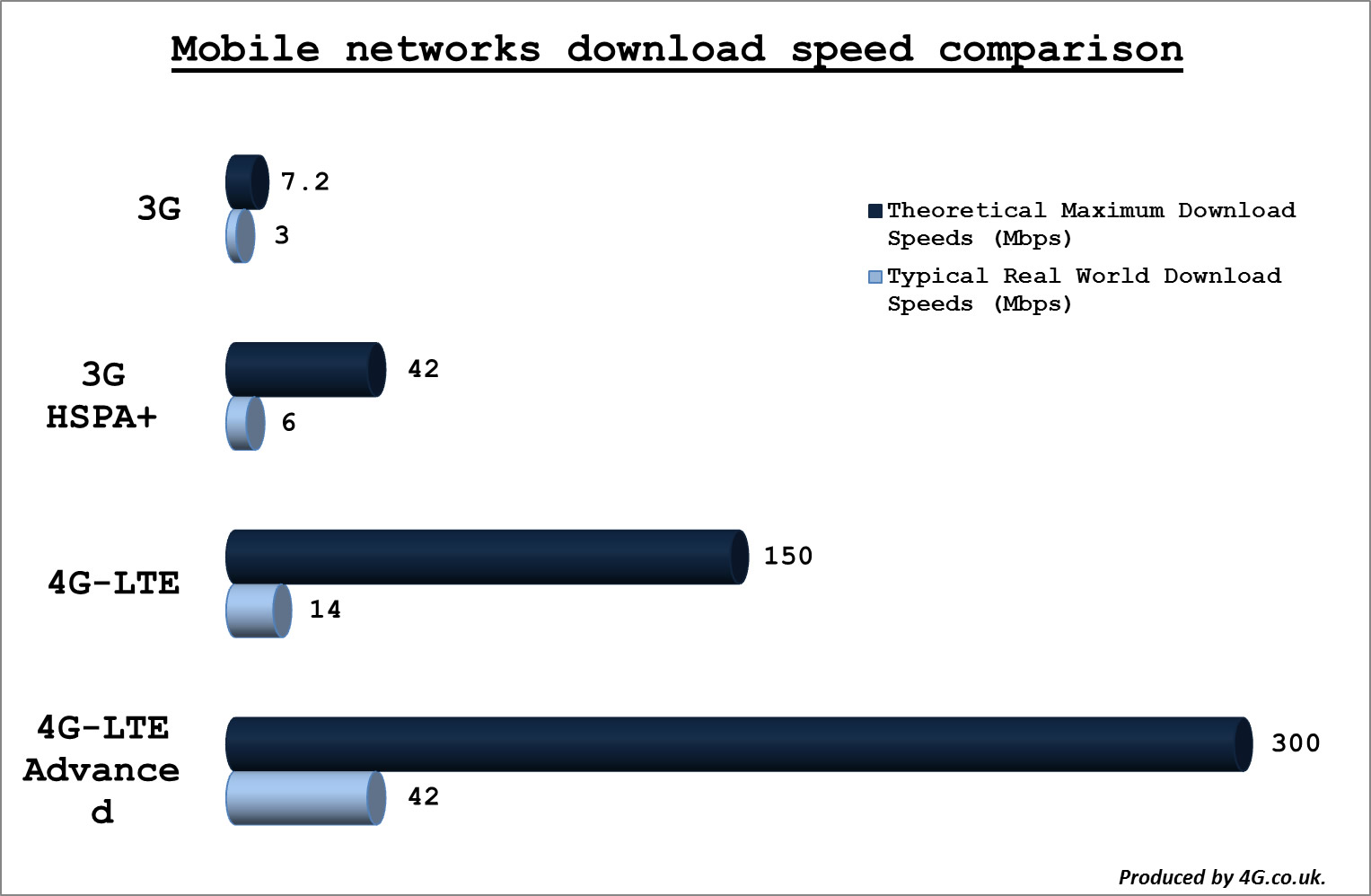
4G LTE Advanced (also known as LTE-A) is basically what it sounds – an advanced version of 4G, one that’s faster than standard 4G. You can think of it a bit like 4.5G or a half step between 4G and 5G, and it’s something that many networks started rolling out in the years before 5G launched.
Read on for the low-down on just how fast it is, how it works, and how you can get your hands on it.
There’s no hard and fast answer as to how speedy LTE-A is. Theoretical peak download speeds stand at around 300Mbps, whilst standard 4G LTE stands at 150Mbps.

Having said that, you’ll likely find that the real world download speeds of standard 4G normally top out at around 15Mbps, as other factors such as the device you’re using it on, your proximity to a 4G mast and how many other people are on the network all drastically affect the speeds.
Similarly you’re not likely to get consistent LTE-A speeds of 300Mbps, but it’s still likely to deliver consistent real world speeds of over 42Mbps and up to 90Mbps, making it at least 3 times faster than standard 4G LTE speeds.
Essentially, while standard 4G data connections use one antenna and one signal at any given time, 4G LTE-A uses multiple signals and multiples antennas.
It uses MIMO (Multiple Input Multiple Output) technology to combine multiple antennas on both the transmitter (for example 4G masts) and the receiver (for example a smartphone). So a 2x2 MIMO configuration would mean there were two antennas on the transmitter and two on the receiver, and you don’t have to stop at two. The more antennas there are the faster the speed can theoretically be, as the data streams can travel more efficiently.

That technology is then combined with ‘carrier aggregation’, which allows a device, such as a smartphone, to receive multiple different 4G signals at once and they don’t even have to be on the same frequency, so you could receive an 1800MHz and an 800MHz signal at the same time for example, none of which is possible with standard 4G.
Up to five different signals can be combined at once and with each offering up to 20MHz of bandwidth they can be combined to create a data pipe of up to 100MHz of bandwidth.
The upshot of all that is that it’s faster than standard 4G, a lot faster.
Chances are that you can get LTE-A right now – at least in urban areas. Networks haven’t shared up to date details of exactly how widespread their LTE-A services are, but EE, Three, Vodafone and O2 all offer it.
EE markets the service as 4G+ and first launched it years ago in London. As well as now covering much of the city, its 4G+ service is available in other major cities such as Birmingham, Liverpool and Manchester.
Vodafone also offers LTE-A in numerous locations, such as London, Birmingham, Manchester, Liverpool, Cardiff, Nottingham and Bristol. And Three too has launched upgraded 4G in cities such as London, Birmingham, Cardiff, Edinburgh and Glasgow, as well as being in the process of upgrading 6,000 of its sites (work that’s due to be completed in 2023) to bring speed boosts to 80% of its network traffic.
O2 offers similar upgrades in some places, though we have less data on where. We do know though that it has upgraded its 4G network capacity in 33,000 London postcodes.
Again though, with all of these networks this is just a snapshot, not a complete picture – chances are that by now LTE-A is widely available on all of them, they just haven’t shared the specifics.
We might not have a complete list of places with LTE-A coverage, but it’s easy to check whether you’re getting it, as an icon will appear on your phone where it would otherwise say ‘4G’. It will likely say ‘4G+’, but may alternatively say ‘LTE-A’.
While not all smartphones work with LTE-A, the vast majority of modern ones do. They have to at least be a Cat. 6 device to support it, but that covers many phones made from around 2015 onwards.
Of course, it almost goes without saying that high-profile handsets like the Samsung Galaxy S21 and iPhone 12 ranges support it, but even much lower end, older, cheaper, and less well known phones do in most cases.
Many newer handsets, particularly high-end ones, such as the iPhone 6S, Samsung Galaxy S6, Sony Xperia Z5, HTC One M9, LG G4 and Microsoft Lumia 950 support it, but most older and lower end handsets don't. The good news is that over time more and more smartphones will arrive with LTE-A support and as it becomes more widespread it should start filtering down to low end devices too.
The next step is already in progress – it’s 5G. This is a huge upgrade on even LTE-A, and the UK’s networks are in the process of rolling it out.
Average speeds on 5G as of 2021 are typically well over 100Mbps, with peak speeds in real world UK tests closing in on 1Gbps, and theoretical speeds that are much, much higher than even that. Latency is potentially a lot lower too on 5G, and the tech opens up all sorts of new use cases, such as smart cities and remote medical care.
Fewer handsets work with 5G at the time of writing, but a large and ever-growing number do, and coverage is increasing all the time. For up to date details on 5G coverage, check out our network coverage guides